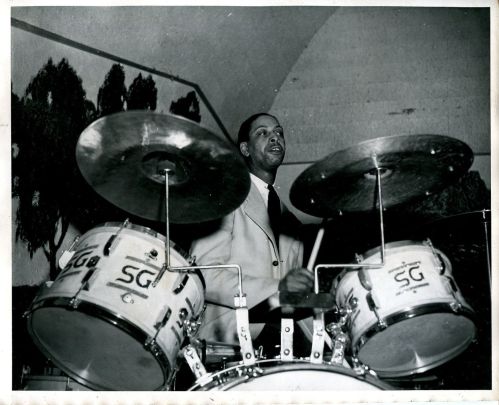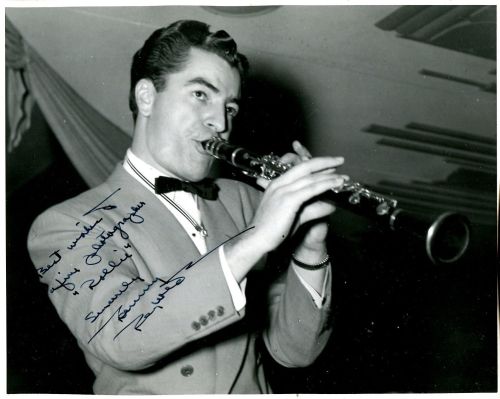Regally, Harry Carney played baritone saxophone and other reeds in the Duke Ellington Orchestra from his adolescence to his death, a record of loyalty I think unmatched, even by Freddie Green with Basie. But even he could be wooed into other people’s record sessions now and again. An early and glorious appearance is on this 1936 Teddy Wilson date, where he sounds positively limber on WHY DO I LIE TO MYSELF ABOUT YOU?
On this side, Billie Holiday sat out, or went home, but the instrumental performance of June 30, 1036, is priceless: Jonah Jones, Johnny Hodges, Harry Carney, Teddy Wilson, Lawrence Lucie, John Kirby, Cozy Cole.
On this Edmond Hall session, Carney majestically states the melody of I CAN’T BELIEVE THAT YOU’RE IN LOVE WITH ME at the blissfully romantic tempo I think is ideal for the song:
The date is from May 5, 1944. An anecdote I cannot verify is that Hall wanted Tricky Sam Nanton to play trombone but that Nanton’s loyalty to Ellington so strong that he would not. This record is an astonishing combination of timbres nonetheless, with Alvin “Junior” Raglin aboard as well. And Sidney Catlett, for whom no praise is too much.
Finally (although I could offer many other examples) one of Harry Lim’s wonderful ideas for Keynote Records — he also created a trumpet choir of Roy Eldridge, Emmett Berry, and Joe Thomas; a trombone one of Benny Morton, Vic Dickenson, Claude Jones, and Bill Harris — this extravaganza of sounds with Carney, Coleman Hawkins, Don Byas, Tab Smith, Johnny Guarnieri, Al Lucas, Sidney Catlett, recorded on May 24, 1944. Whether it was the tempo or the imposing members of the sax ensemble, Carney seems ever so slightly to lumber, like a massive bear trying to break into a lope, but his huge sound carries the day. Tab Smith arranged for the date, and on this side he gives himself ample space: he sounds so much like our Michael Hashim here!
The inspiration for this blogpost — did I need a nudge to celebrate Harry Carney?– was, not surprisingly, an autographed record jacket spotted on eBay:
Wouldn’t it be so rewarding in whatever our line of work might be to be so reliable and sought-after as Harry Carney was to Ellington and everyone else?
May your happiness increase!



































